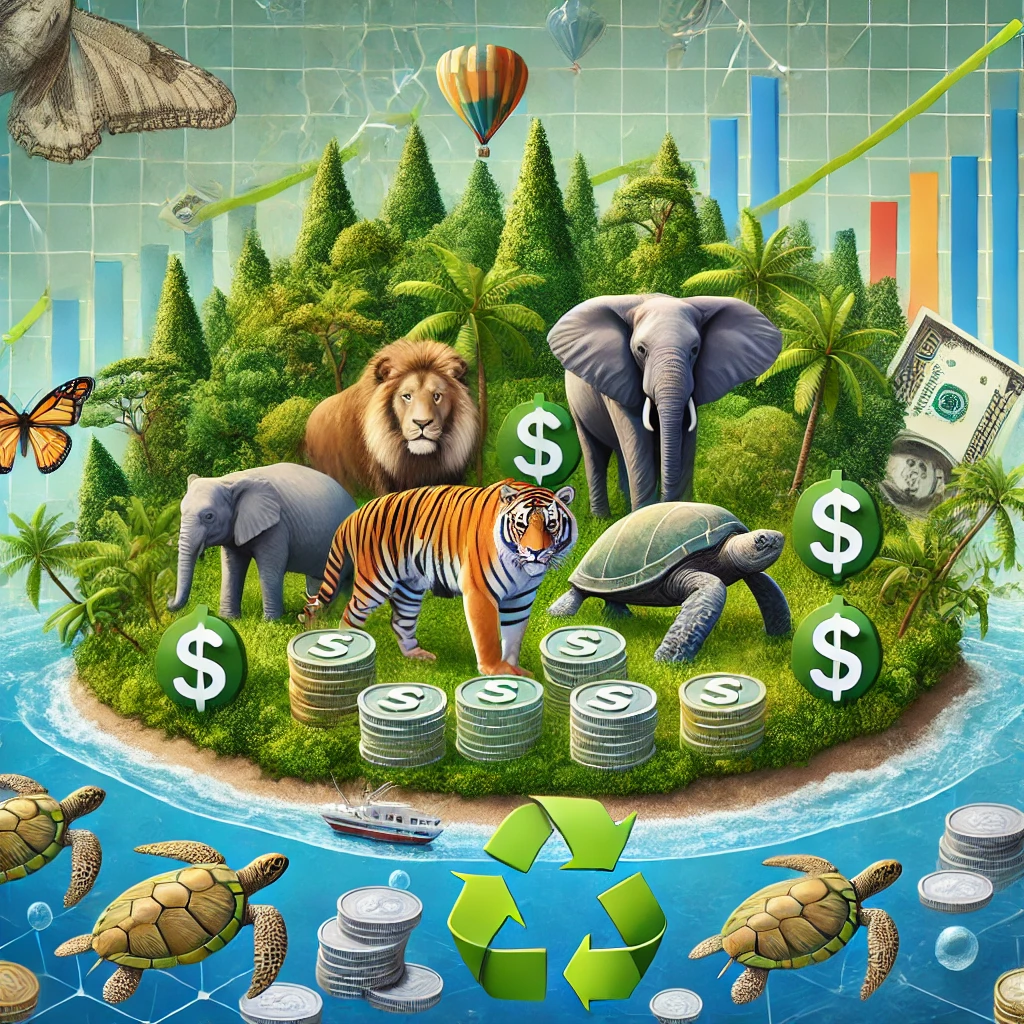Saving Endangered Species
In recent years, the topic of saving endangered species has gained significant attention. While the ethical and ecological reasons for conservation are often discussed, the economic implications of these efforts are equally important and deserve a closer look. In this blog post, we will explore the various ways in which saving endangered species can impact economies, both positively and negatively, and why it is a matter that concerns us all.
The Value of Biodiversity
Biodiversity, or the variety of life on Earth, is crucial for the stability and health of ecosystems. It provides numerous benefits, including:
- Ecosystem Services: Healthy ecosystems offer services such as pollination of crops, purification of water, and climate regulation.
- Medical Discoveries: Many pharmaceuticals are derived from compounds found in plants and animals.
- Tourism and Recreation: Wildlife tourism is a major source of income for many countries.
The loss of biodiversity can lead to the collapse of these services, which in turn can have severe economic repercussions.
The Costs of Inaction
The Domino Effect on Industries
When a species becomes endangered or extinct, the effects ripple through the economy. For example, the decline of bee populations has already started to impact agriculture, as bees play a crucial role in pollinating many crops. The agricultural industry is just one of the many sectors that could suffer. Without bees, we face reduced crop yields, which can lead to higher food prices and scarcity.
Increased Spending on Mitigation
Governments and organizations often need to spend large sums of money to address the damage caused by the loss of species. This includes restoring degraded habitats, managing invasive species, and attempting to reintroduce lost species into the wild. These efforts are not only costly but also time-consuming and often less effective than preserving species in the first place.
The Economic Benefits of Conservation
Job Creation
Conservation efforts can lead to the creation of jobs. From park rangers to biologists and researchers, there are numerous opportunities for employment in this field. Additionally, the tourism industry benefits significantly from conservation efforts. Protected areas and wildlife reserves attract millions of visitors each year, generating income for local communities and creating a variety of jobs.
Sustainable Development
Investing in biodiversity can promote sustainable development. For instance, preserving forests not only protects the species that live there but also supports industries such as ecotourism and sustainable forestry. These industries can provide long-term economic benefits without depleting natural resources.
Case Studies: Success Stories
The Bald Eagle
The recovery of the bald eagle in the United States is a prime example of how conservation efforts can lead to economic benefits. Once on the brink of extinction, the bald eagle has made a remarkable comeback thanks to legal protections and habitat restoration. Today, bald eagles attract birdwatchers and nature enthusiasts, contributing to the local economies of the areas where they are found.
The Giant Panda
China’s efforts to save the giant panda have not only helped to preserve this iconic species but have also boosted tourism. Panda reserves attract visitors from around the world, generating significant revenue. Additionally, the success of panda conservation has improved China’s international image and strengthened its role in global environmental leadership.
The Role of Policy and Legislation
International Agreements
International agreements, such as the Convention on International Trade in Endangered Species of Wild Fauna and Flora (CITES), play a crucial role in protecting endangered species. By regulating the trade of wildlife and their products, CITES helps to reduce poaching and illegal trafficking, which are major threats to many species.
National Policies
National policies and legislation are also essential. For instance, the Endangered Species Act (ESA) in the United States has been instrumental in protecting numerous species from extinction. Effective policies need to be backed by adequate funding and enforcement to ensure they achieve their intended goals.
Challenges and Controversies
Balancing Economic Development and Conservation
One of the main challenges in conservation is finding a balance between economic development and the protection of endangered species. In many cases, economic activities such as logging, mining, and agriculture can threaten the habitats of endangered species. It is essential to develop strategies that allow for both economic growth and conservation.
Funding Conservation Efforts
Conservation efforts often require significant financial resources. Securing funding can be challenging, especially in countries with limited budgets. Innovative financing mechanisms, such as conservation trust funds and payment for ecosystem services, can help bridge the funding gap.
The Future of Conservation Economics
Integrating Economic and Environmental Policies
To ensure the long-term success of conservation efforts, it is crucial to integrate economic and environmental policies. This means considering the economic value of biodiversity in decision-making processes and recognizing that the health of ecosystems is fundamental to economic stability.
Public Awareness and Education
Raising public awareness about the economic implications of saving endangered species is vital. Education campaigns can help people understand that protecting biodiversity is not just about saving animals and plants but also about securing our future. Informed citizens are more likely to support and participate in conservation efforts.
Understanding the Economic Impact of Endangered Species Conservation
When it comes to the economic implications of saving endangered species, the benefits far outweigh the costs. Biodiversity supports industries such as agriculture, pharmaceuticals, and tourism. By investing in conservation, we can create jobs, promote sustainable development, and ensure the continued provision of essential ecosystem services. Effective policies and international agreements are crucial for the success of these efforts. Public awareness and education play a significant role in garnering support for conservation initiatives. Ultimately, protecting endangered species is not just an environmental issue but an economic imperative that affects us all.
Conclusion
Saving endangered species is a complex issue with far-reaching economic implications. While the costs of conservation can be high, the benefits—ranging from job creation to the preservation of essential ecosystem services—are invaluable. By understanding and addressing the economic aspects of this issue, we can develop more effective strategies to protect our planet’s biodiversity and ensure a sustainable future for generations to come.

